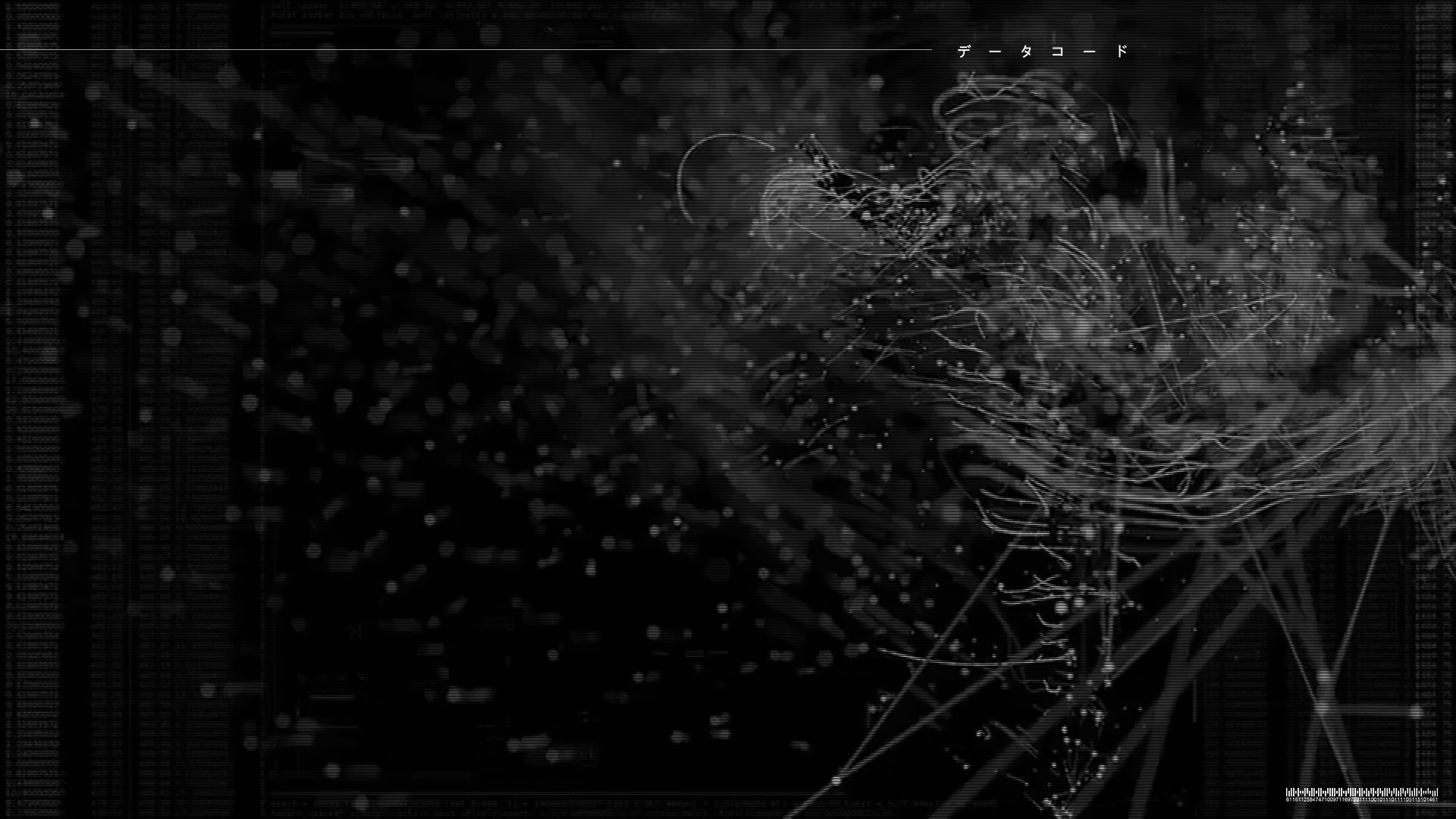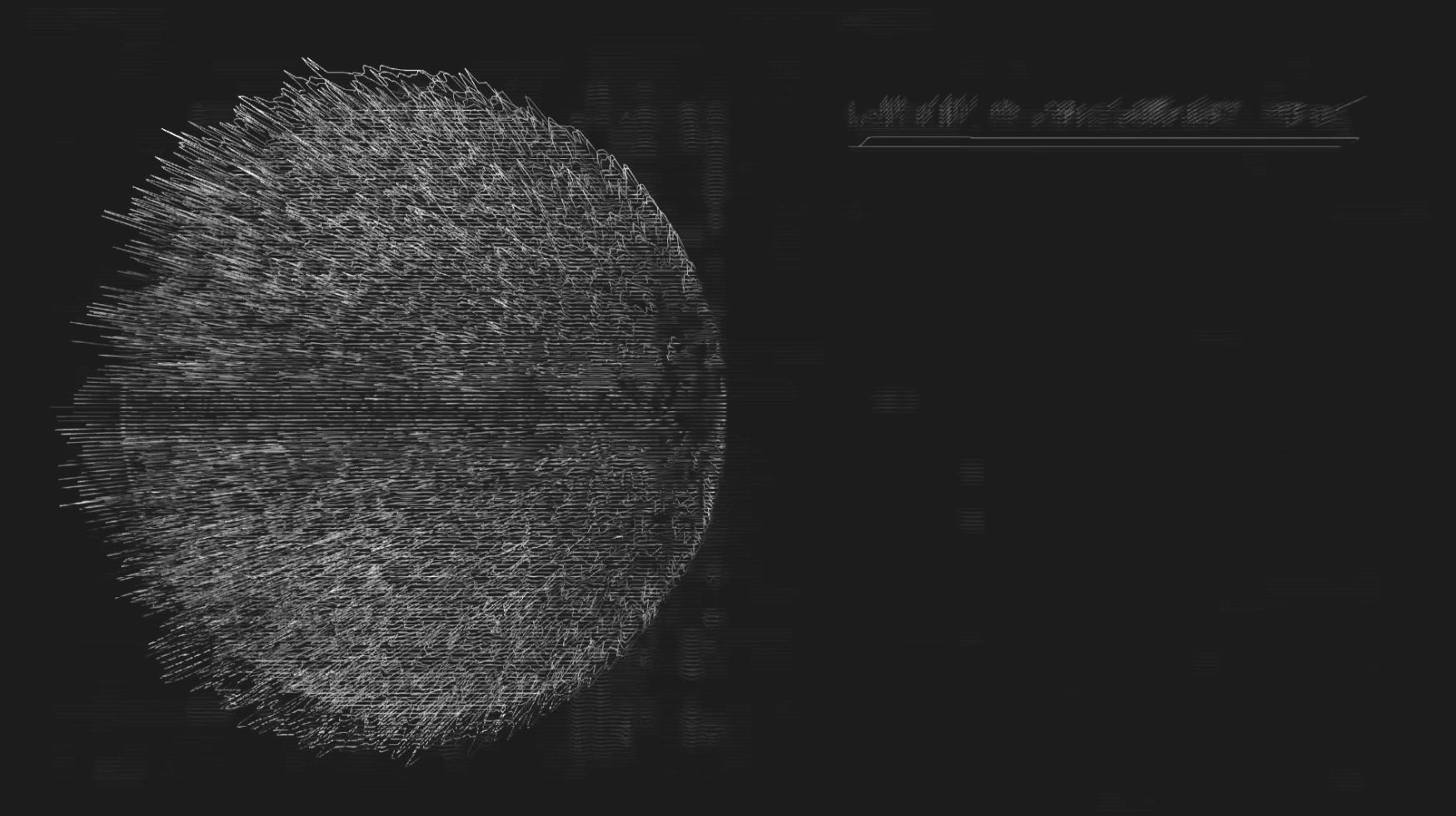What it would be like for an AI to feel trapped inside the machines and electronic networks that house it? Using circuit-bent musical equipment, machines transformed into new sonic devices, and audio feedback loops, Italian musician and artist Datacode creates what he calls a “cyberpunk operetta of the posthuman age,” to explore this question. The result is Wraithmachine a 35-minute audiovisual piece with flickering black-and-white visuals that evoke Denial of Service’s swirling, generative cyberpunk dystopias and follow an AI’s birth and sudden sentience.
So far, Datacode has only released one chapter, Chapter 1: Origin (the 35-minute piece was released in a limited USB stick run that sold out within hours), but the artist recently pulled visuals from the full version, tweaking and rearranging them to accompany track remixes by several artists. The visual “Reworks,” as he calls them, are something separate and without narrative, but very much in the spirit of his fictional AI’s awakening.
“[Wraithmachine], the second album of the Datacode project relies on the story of the first LP, error-0x17, that speaks of a hypothetical working system that at some point short-circuits and begins to create multiple errors of data,” Datacode tells Creators. “Wraithmachine concerns a particular data error that gives rise to the first ‘choice’ that the machine has to take. Soon the number of choices grows and the machine finds itself having to ‘think’ differently and autonomously, thus creating a true artificial intelligence trapped in its limited and inorganic body. A sentient entity as a wraith within the machine.”
Datacode notes that the glitch seen in the visuals is to be thought of as a choice of the machine in a process of thought. This, he says, is the predominant and most significant part of the entire Datacode project.

Just as integral to the project is the idea of circuit-bending and using scrap equipment in new ways. As a result, it has a conceptual connection to the line (and cultural aesthetic) of William Gibson’s cyberpunk short story “Burning Chrome,” which says, “The street finds its own uses for things.” Datacode notes that, while this aesthetic runs through cyberpunk, thus generally inspiring the Wraithmacine audiovisual project, the instrumentation was equally inspired by a different genre.
“Visual art has been a source of inspiration in creating new instruments and new musical techniques but the aesthetic result is often only to be considered on the functional plane,” says Datacode. “The sound design in this project is everything. New sounds, new images or soundscapes, almost every sound recorded by scrap equipment is filtered, processed and reproduced sometimes even in a random way to always keep the ‘glitch’ factor (the choice of the machine).”

“Various techniques have been used such as the no-input technique consisting of manipulating a mixer’s empty channel feedback,” he adds. “[It’s] basically an analog glitch.”
To create other sounds, Datacode used pieces of electronics like old joysticks, or old televisions for sound transmission and visualization. He also made use of cathode coils to capture electromagnetic fields from circuits of cellulars, calculators, and so on. The visuals, which took around nine months to create, were designed on Max/MSP and Jitter to be sound-responsive, so that they changed according to what Datacade played on the musical instruments and circuit-bent electronics.
Wraithmachine is out now on Meth Lab Recordings. While the USB sticks containing the full 35-minute audiovisual Wraithmachine experience are now sold out, Datacode says people can still catch it during his live shows.
Click here to check out more of Datacode’s audiovisual work.
Via Creators




